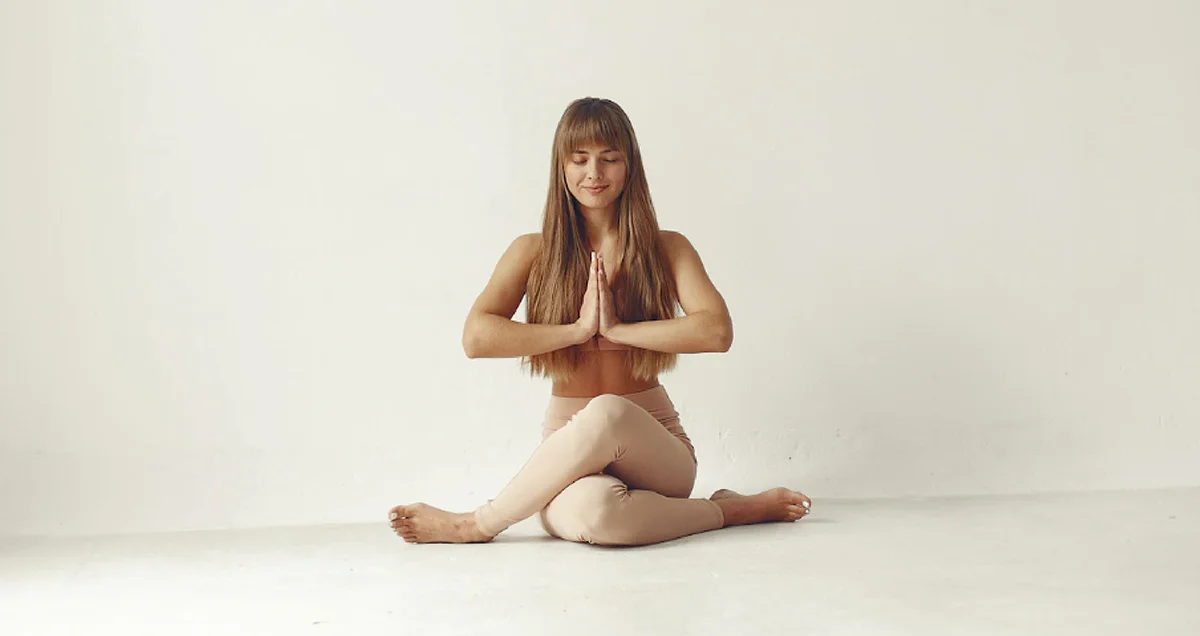What is Yin Yoga?
What is Yin Yoga?
In the current series of posts, we are focusing on IAM Yoga’s signature class styles: Flow, Core Flow, Detox Flow, Detox Core Flow, and Classic Yoga. We’re also going to do a primer on Restorative Yoga and Yin Yoga. In the past, we have covered Hatha and Ashtanga – check out their respective posts for more. The intention of these articles is to help you choose the right class for you at the right time – every day is different, so you will need different styles on different days.
Understanding each style of yoga can also help you choose an intention for each practice that is best supported by the class style. For example, ending up in a fast-moving Flow class in the hot studio when you’re feeling ungrounded or anxious can be counterproductive if you weren’t sure what to expect or aren’t familiar with the sequence. However, knowing what to expect in the class can help you set an intention and a focus that can help you get grounded even when the class moves quickly.
Yin Yoga is very different from some of the other styles on the IAM Yoga schedule, so it can be helpful to know what you’re walking into when you enter a Yin class. The primary goal of Yin Yoga is to get a deep, intense stretch in the connective tissue of the joints and in the muscles, so Yin poses are held for longer periods of time to allow your body to sink more deeply into each stretch.
“Yin” is based on the Taoist concepts of yin and yang: yin is soft, passive, stable, and downward moving, while yang is mobile, active, and upward moving. Most of the classes on the IAM schedule would be considered yang-style classes, and Yin Yoga presents a useful contrast in training both your mind and your body within your yoga practice.
Yin presents a particular challenge for many people because our first instinct, when confronted with discomfort, is to move away from it. Instead of avoidance, the practice of Yin is to sit in that discomfort and gradually move through it. This practice encourages mindful attention to the breath and to the sensations in the body and what they might be telling you.
You may hold Yin poses in a class for anywhere from 45 seconds to 5 minutes, depending on the pose. Most Yin poses are seated or supine (lying down) or have most of the weight low to the ground, such as a low lunge with the back knee on a padded blanket. Many Yin poses are padded and propped to avoid going too deep into the pose right off the bat – the point isn’t to torture students, although it might feel like it at times!
When you enter a Yin pose, you don’t want to go right to your edge or maximum capacity right off the bat. The beauty of a long hold is that you can start at the edge of discomfort, ensuring you can breathe deeply and evenly, and only make your way deeper into the stretch once you feel capable of it. The key here is the breath – hitches or stops in your breath will tell you that you’re too deep and you need to back out of that intensity.
Increasing flexibility depends on relaxation – if you can’t relax, you can’t change how flexible you are. In this way, the tension only brings you so far into your general yoga practice. Many people want to get stronger and attack their practice by bringing tension into every pose and then consider themselves to be working hard. But strength needs to be balanced by flexibility or it will become brittle, leading to a higher potential for injury. If you struggle with your flexibility, Yin Yoga can be a great vehicle for teaching you to work through the discomfort and how to relax enough to make changes in your body.
A typical Yin class will open with a seated meditation; the teacher may lead the class in chanting “OM,” which is always optional to join. Then, moving slowly and mindfully, you will set up in a series of poses and hold each of them for varying periods of time. While you hold each pose, the teacher will often talk you through what you are doing from an anatomical perspective or help you understand some of the philosophical concepts that underlie the practice of Yin Yoga or yoga in general. They will also sometimes play music, but some teachers will allow you to breathe in a pose or two in silence. The class will end similarly to how it started – with a long savasana (corpse pose, or lying on the floor in silence), sometimes followed by three repetitions of “OM.”
If you tend to practice in yang-style, or active, classes, Yin can offer the perfect balance to your repertoire. Increasing your flexibility can help you avoid injury as well as offer the ability to move deeper into poses in your active practices. Just remember that Yin Yoga is never about forcing your body into a deep stretch – the point is to relax and allow yourself to soften, which can provide a contrast to an active practice that will keep your body safe for the long term.


